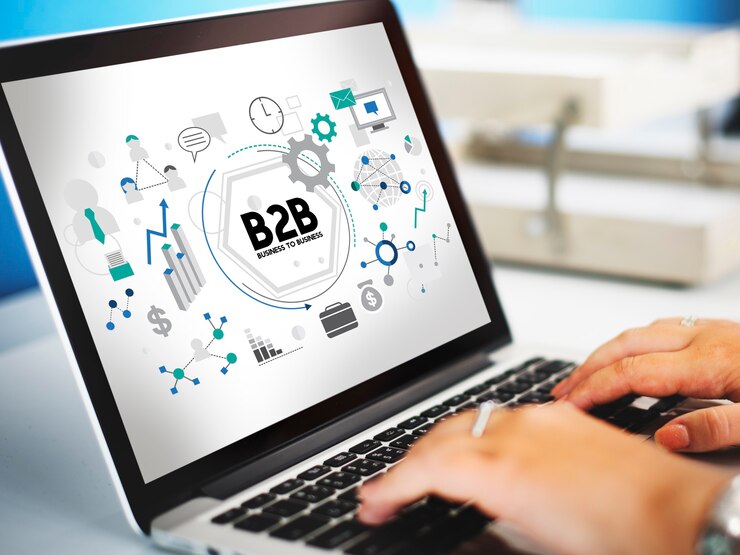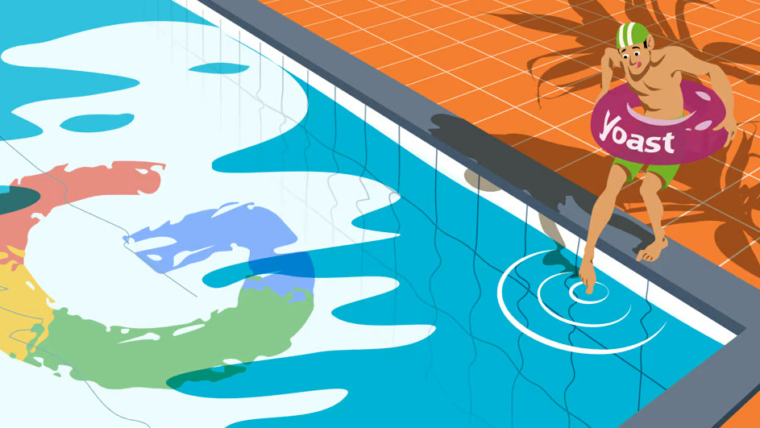The complete guide for B2B email marketing
Email communication seems to be a communication method that is here to stay. Done right, it can bring in a significant amount of money. However, our approach will be determined by our clients and business.
A B2B relationship is founded on logic, as opposed to a B2C relationship, where we appeal to the customer’s emotions to persuade him to purchase our good or service. The three most important factors for businesses to consider are timing, budget, and resources. Businesses frequently sell expensive, complex products to other businesses that call for professional advice. They truly present a challenge.
When collaborating with another company, it is imperative that we comprehend the reasoning and logic behind each purchase choice. We cannot accomplish our business objectives unless we assist our prospects in understanding our product or service.
We can assist the sales department by using our B2B email marketing campaign as a tool to spark interest that will eventually result in a request. Perhaps over the phone or in person so we can go over the specifics of the budget. The marketing department will establish the first contact, and the sales department will establish the second.
An effective email can help us stay in touch with our best clients and initiate a sales conversation with potential leads.
The Benefits of Having a B2B Email Marketing Strategy
Email marketing is still a very good, affordable way to create leads and establish enduring connections with our clients. B2B email marketing has a definite cost-value relationship and is a measurable channel.
- According to Experian, the average return on investment for email marketing is 44.25 dollars.
- Email is how 77% of B2B customers share helpful content (Earnest Agency).
- According to 73% of marketers, email is essential for their company and generates leads 40 times more effectively than social media.
More interaction results from B2B email marketing. Increased engagement translates into more leads. Conversion rates increase with lead volume.
A B2B email marketing strategy can be created in 10 easy steps.
1. Pick a reliable email service provider (ESP). This will enable us to bypass the stringent antispam filters that are applied to a lot of business emails. Numerous individuals consider attachments to be a security risk, leading them to refuse emails containing them. Uploading the file to a server and including the download link in the email text is one potential solution. A quality newsletter program also guarantees optimal database management by classifying the emails that bounce.
2. Set a SMART objective. Without knowing our marketing objectives, we cannot hope to meet them. With this B2B email marketing campaign, what are we hoping to accomplish? Schooling? Additional leads? bolster the reputation or boost sales? Marketing objectives need to be SMART—specific, measurable, attainable, relevant, and time-bound. We’ll set more specific objectives, like “getting 35% of leads for the product X in February,” rather than broad ones, like “getting more leads.” We require dates, percentages, and numbers. We have to be as scientific as we can be.
3. Divide the contact database into segments. Targeting particular leads with as targeted of messages as you can is the aim. To reach out to our top clients, for example, we require a segmented email list that allows us to send them exclusive offers, pertinent articles, or notices of upcoming events. The list segment to which we forward the content determines its relevance. It is best to create distinct segments for each line of goods or services we provide.
4. As much information as you can about the people who decide what to buy should be gathered. Compared to B2C businesses, B2B customers frequently have smaller databases. Gaining traction in this niche but important market is the difficulty. It’s not necessary for B2B marketing to be impersonal. In B2B transactions, multiple individuals typically make the ultimate decision. Since each of them will read our emails from a different perspective, we must create them with their perspectives in mind. The CEO will not have the same priorities and goals as a technical manager. Whose judgment will count more? Does it belong to a middle manager or a director? What does his job description say? What kind of goods does he typically purchase? In addition, our lead has obligations and goals within his own business. We must recognize them, assist the person in achieving them, and watch them advance in their career. We also need to be aware of the company’s industry, size, number of employees, and any other information that will help us determine how our product or service can benefit it. For example, if our company sells software, we could find out which solution they use. In order to give them the greatest possible shopping experience, it’s also critical to understand how they communicate with other suppliers. We can ask our leads to update their information later, or we can gather this information through the registration form. All of this data will be neatly arranged in a CRM, enabling us to present them with business proposals that are tailored to their requirements. It is imperative that we closely monitor bounced emails and, if required, seek out new correspondents to ensure we maintain communication with the company.
5. Automate in order to advance the discussion with our leads. Sending emails that are triggered by certain actions, such as downloading content from our website to activate leads who haven’t used our services in a while, or creating an automated welcome email for new subscribers
6. To increase the leads’ interest in our goods and services, we should set up a lead nurturing campaign that consists of a sequence of emails that we will send over time. We’ll entice users to visit our website, social media pages, and other platforms by publishing blog entries or other types of content. Before making a purchasing decision, our prospect typically needs to receive at least seven emails. This “rule” is even more crucial in business-to-business transactions since larger investments are needed. Our clients never make impulsive purchases. With each step, we must educate and impress our leads because the sales cycle is lengthy. A business-to-business newsletter follows the prospect as he progresses through our company’s various stages. Because of this, we have to make sure that we are covering everything: industry news, instructional videos, comparative infographics, etc. Regardless of whether they are current clients or not, let’s put ourselves in their position and see how we might assist them in their day-to-day tasks. Every situation will require a slightly different tone from us. For instance, we can include more sophisticated content in a loyalty message than in a gaining message. After that, in order to demonstrate our understanding of their issues and willingness to assist them, we will be closer and more knowledgeable.
7. Good design. In order to maximize the user experience (UX), the email must be visually scannable, with clear headlines and plenty of blank space to allow the user to quickly grasp the main idea. Important elements that convey the corporate image are the color scheme and the placement of the logos. Videos and images ought to be used exclusively when they are truly necessary and advance the text’s intended purpose.
8. Promote education over sales. Talking too much about ourselves is not appropriate. The only reason our leads have provided us with their contact information is because they believe we can provide them with useful content. We’ll do this by gathering data about their sector and area of expertise, including case studies, expert interviews, scientific research, and trends they need to be aware of. Our emails need to demonstrate that we are knowledgeable about the industry. Inform the clients that we are aware of their difficulties and are able to assist them. We’ll share concepts that provoke meaningful discussion about our brand, product, or issue we’re trying to resolve. We require interesting and helpful content. Before we can sell our product, we must sell our content. If we educate the B2B customer about our product, the options we provide, and the problems he will be solving with them, he will be more inclined to make a purchase. According to a study, calls to action that include “more information” yield better results than those that include “buy now.” Sending out too many press releases will be regarded as spam.
9. Examine. To get more conversions, we need to test even the smallest details so that we can get to know the target every day. Which type of landing page, copy, title, etc., is most effective? Our own experience from the A/B tests must be applied. Depending on our industry, we may need to examine the data every week, month, or trimester to identify areas for improvement. In addition to the CTR, we will also evaluate the proportion of leads that proceed through the conversion funnel. Poor click-through rate? We’ll examine the call to action and the copy again. low rate of openings? We’ll make the subject line better. high rate of bounce-back? Let’s examine the landing page.
10. legal prerequisites. The guidelines we must adhere to when using our database have been modified by the new European General Data Protection Regulation. RGPPD: https://www.bcm.marketing/en/bcm-blog
Have you, too, fully realized the potential of email as a B2B marketing tool? By expanding your lead database, developing an email marketing plan, and other strategies, BLDSindia Marketing can put you ahead of the competition.
BCM Marketing will provide you with advice on anything you require rough our blog and interactions with clients, we impart our 25 years of experience.




